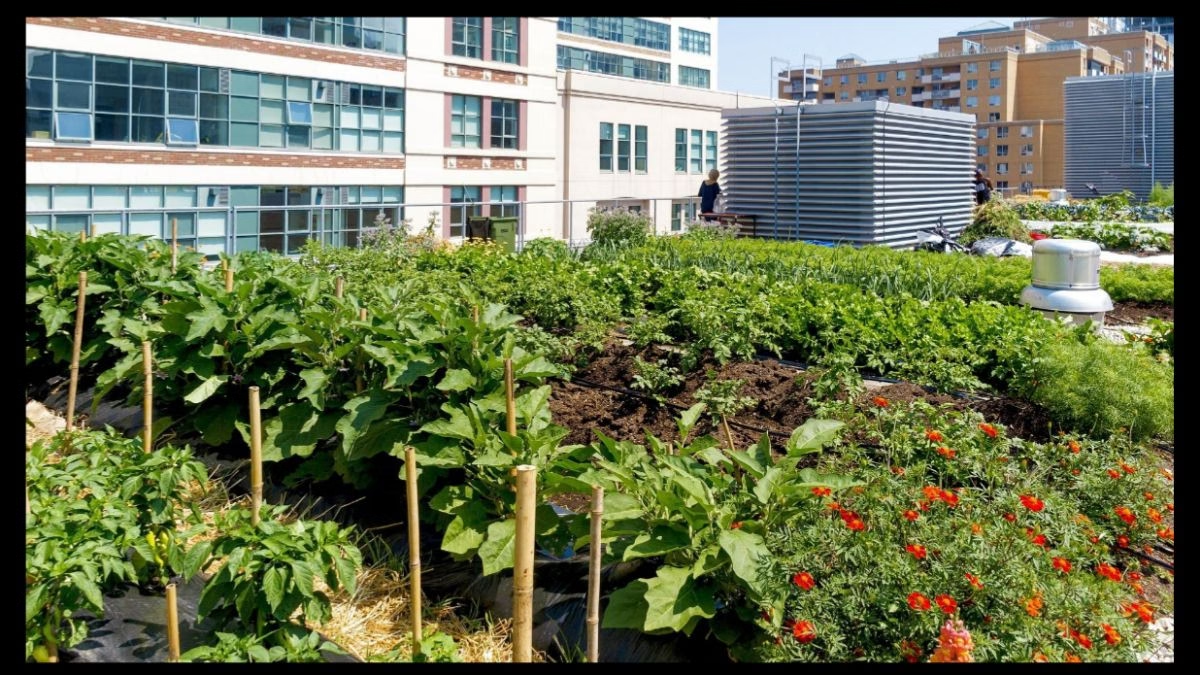Start Your Urban Garden 2025: Urban gardening is revolutionizing the way we grow food, making it possible to cultivate fresh vegetables, herbs, and fruits even in small city spaces. Whether you have a tiny balcony, a rooftop, or just a sunny window, you can start your own urban garden with ease. This guide will walk you through everything you need to know to get started, from choosing the right space to selecting the best plants and maintaining your garden for long-term success.
Why Start an Urban Garden?
Urban gardening offers numerous benefits, both personal and environmental:
✅ Access to Fresh Food – Grow organic vegetables and herbs right at home.
✅ Saves Money – Reduce grocery costs by growing your own produce.
✅ Better for the Environment – Reduce carbon footprint and food waste.
✅ Improves Mental Health – Gardening is proven to reduce stress and anxiety.
✅ Adds Beauty to Your Space – Greenery enhances urban homes and apartments.
Step 1: Choosing the Right Space for Your Urban Garden
Urban gardens can thrive in various small spaces. Consider the following options:
Balcony or Terrace Garden
- Ideal for container gardening and vertical gardens.
- Ensure the area gets at least 4-6 hours of sunlight daily.
- Use railing planters or wall-mounted pots to maximize space.
Rooftop Garden
- A great option if you have roof access.
- Ensure structural safety and check weight limits before adding soil-filled containers.
- Install a drip irrigation system for easier maintenance.
Indoor Gardening
- Perfect for apartments with no outdoor space.
- Grow herbs like basil, mint, and cilantro in pots near windows.
- Use LED grow lights if natural sunlight is limited.
Community Garden
- If you don’t have space at home, join a community garden.
- These spaces provide shared plots where you can cultivate vegetables and herbs.
Step 2: Selecting the Best Plants for Your Urban Garden
Choosing the right plants is essential for a thriving urban garden.
Best Vegetables for Small Spaces
🥬 Lettuce & Spinach – Fast-growing and perfect for containers.
🍅 Cherry Tomatoes – Can be grown in pots or hanging baskets.
🫑 Bell Peppers – Require minimal space but need sunlight.
🥕 Carrots & Radishes – Grow well in deep containers.
Best Herbs for Urban Gardening
🌿 Basil, Mint, Cilantro – Grow easily in small pots.
🌱 Rosemary & Thyme – Require little maintenance.
🪴 Parsley & Chives – Can be grown indoors year-round.
Best Fruits for City Gardens
🍓 Strawberries – Grow in hanging baskets or vertical planters.
🍋 Lemon Trees – Dwarf varieties thrive in pots.
🍉 Watermelon (Mini Varieties) – Grow in larger containers with proper support.
Step 3: Choosing the Right Containers & Soil
Using the right containers and soil is key to a successful urban garden.
Best Containers for Small-Space Gardening
- Plastic or Ceramic Pots – Lightweight and easy to move.
- Grow Bags – Perfect for root vegetables like potatoes.
- Vertical Planters – Save space and create a green wall.
- Self-Watering Pots – Reduce watering frequency.
Best Soil for Urban Gardens
- Use organic potting soil for healthy plant growth.
- Avoid using garden soil, as it may contain pests.
- Mix in compost to enrich the soil with nutrients.
Step 4: Watering & Maintaining Your Urban Garden
Proper watering and maintenance are crucial for keeping your plants healthy.
Best Watering Practices
💧 Water in the Morning – Prevents evaporation and fungal diseases.
💧 Use a Drip Irrigation System – Efficient and saves water.
💧 Check Soil Moisture – Stick a finger into the soil; water if dry 1-2 inches deep.
Fertilizing Your Plants
🌱 Organic Compost – Best for natural plant nutrition.
🌱 Liquid Seaweed Fertilizer – Boosts plant growth.
🌱 Eggshells & Coffee Grounds – Great for calcium and nitrogen.
Step 5: Organic Pest Control for Urban Gardens
Keeping pests away without harmful chemicals is essential for organic gardening.
Common Urban Garden Pests & Solutions
🐛 Aphids – Spray with neem oil or soapy water.
🐞 Spider Mites – Use a mix of water and garlic spray.
🐛 Caterpillars – Hand-pick or introduce ladybugs as natural predators.
Natural Pest Control Tips
🌼 Plant Marigolds – Repel harmful insects naturally.
🧄 Use Garlic Spray – Deters aphids and other pests.
🐦 Attract Birds – They help control insect populations.
Step 6: Maximizing Space with Vertical & Indoor Gardening
If space is limited, try these techniques to grow more in less space:
Vertical Gardening Ideas
🪴 Wall-Mounted Planters – Perfect for herbs and small greens.
📌 Hanging Baskets – Great for trailing plants like strawberries.
🛑 Trellises for Climbing Plants – Support cucumbers, beans, and tomatoes.
Indoor Gardening Hacks
💡 Use LED Grow Lights – Provide artificial sunlight for indoor plants.
📏 Install Floating Shelves – Create multi-level growing areas.
🏡 Try Hydroponics – Grow food without soil using nutrient-rich water.
Urban Composting: Turn Waste into Garden Gold
Composting reduces kitchen waste and provides natural fertilizer for your garden.
How to Start Composting at Home
✅ Use a small compost bin or worm composting system.
✅ Add kitchen scraps like fruit peels, eggshells, and coffee grounds.
✅ Avoid meat, dairy, and oily foods to prevent bad odors.
✅ Turn the compost every 2 weeks for faster decomposition.
Frequently Asked Questions (FAQs)
1. Can I start an urban garden without sunlight?
Yes! Use LED grow lights for indoor gardening. Herbs like mint and parsley can thrive indoors with minimal sunlight.
2. How do I keep my plants from dying?
Check soil moisture daily, provide proper drainage, and use organic fertilizers for nutrients.
3. What’s the easiest plant to grow for beginners?
Lettuce, basil, and cherry tomatoes are low-maintenance and grow quickly.
4. Can I grow food on my apartment balcony?
Absolutely! Use vertical gardens, container plants, and railing planters to maximize space.
5. How long does it take to see results?
Most herbs grow in 2-4 weeks, while vegetables like tomatoes take 8-12 weeks to produce fruit.
Final Thoughts: Start Your Urban Garden Today!
Urban gardening is easy, sustainable, and rewarding. No matter how small your space is, you can grow your own fresh, organic food. Start with simple plants, use smart space-saving techniques, and enjoy the journey of cultivating your own urban oasis.
Are you ready to transform your small space into a thriving garden? Leave a comment below and share your urban gardening experience! 🌱🍅💚

